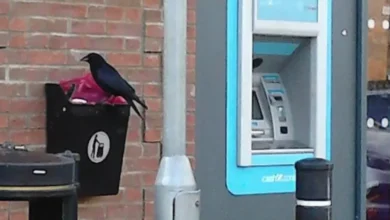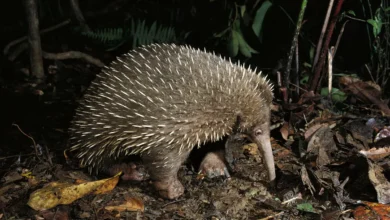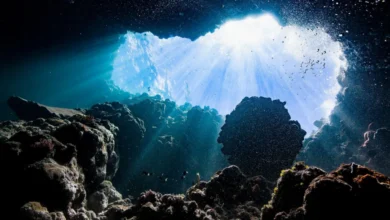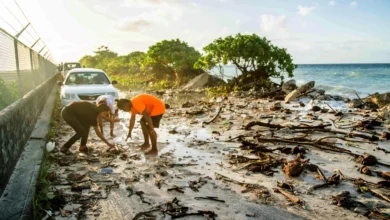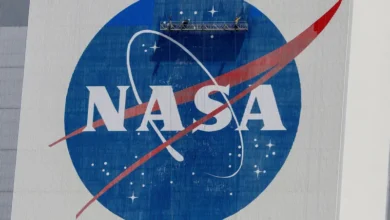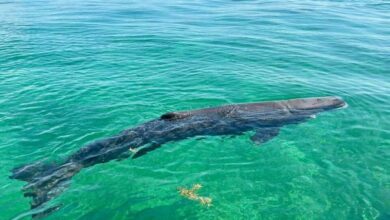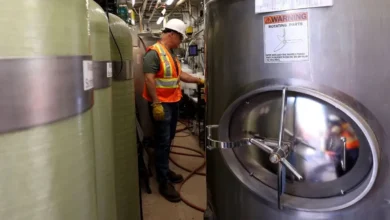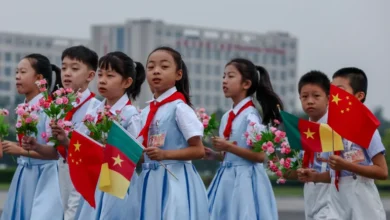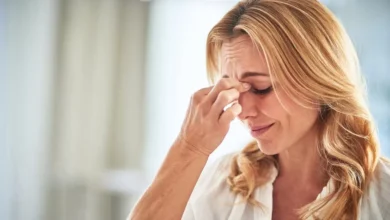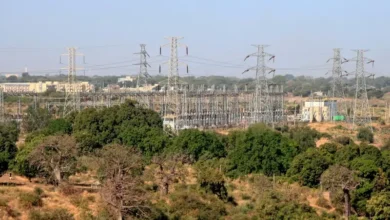Is this the end for Easter Island’s moai statues?
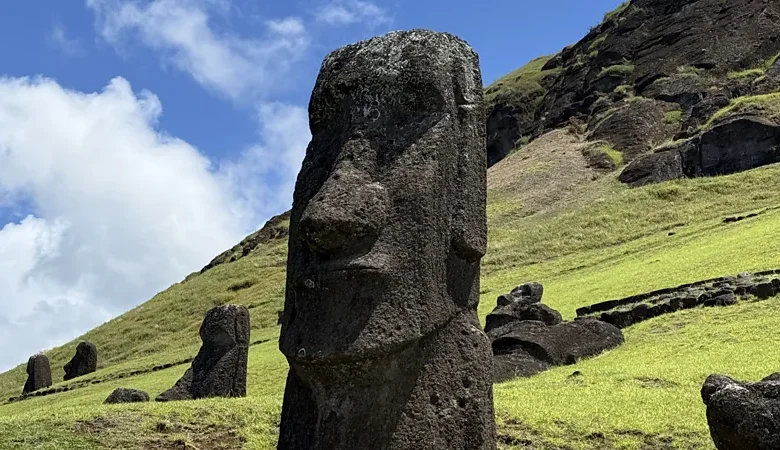
Easter Island’s famous moai statues are crumbling into the sea, forcing locals to face urgent decisions about how best to protect their heritage.
In an ancient quarry on top of a volcano on a remote Pacific island, half-finished figures hewn into the rock ignore Maria Tuki as she walks by.
The rugged faces of these figures sport world-famous furrowed brows and sloping noses. This is the land of the moai, iconic human statues unique to Rapa Nui, also known as Easter Island – an isolated island around the size of Washington DC situated 3,500km (2,170 miles) off the coast of Chile.
Before my visit, I expected to see just a couple of these famous faces at designated tourist sites. But the sheer number of the moai is breathtaking; bits of them are strewn alongside roads, bordering the coast, and shouldering hills. Together, they form a real physical reminder of this land’s ancient history.
We’re protecting the moai to ensure the preservation of our people on this island – Ariki Tepano Martin
Centuries ago, Tuki’s ancestors carved and chiselled many hundreds of monoliths like the ones here. Evidence of that activity is everywhere, both in the heavily worked quarry itself, where some still remain deeply embedded in the mountain, and in the surrounding land, where finished statues lie abandoned, forming paths to the island’s edge. It is thought that teams of workers sometimes lost their grip while transporting the statues to the stone platforms dotted around the coast.
At first glance, the imposing moai, with their stern expressions, seem hardy. But they are made from tuff, a volcanic rock largely composed of compressed ash. This type of stone is porous and unusually soft. The wind and rain do not treat it kindly.
Up close, the aging visages of the moai are riddled with signs of erosion and staining. They are gradually wearing away to dust. Tuki, who works in Rapa Nui’s tourism industry, is essentially watching these stunning figures slowly disappear. “My father told me that the moai would go back into the ocean one day,” she says. Tuki’s father, who died in 2020, was a famed contemporary moai sculptor.
The original statues, mostly carved between 1100 and 1600AD, are increasingly the subject of conservation efforts, given that weathering – supercharged by climate change – threatens to destroy them. Community leaders in Rapa Nui are looking for ways to track and mitigate the damage, trying everything from chemical treatments to making 3D scans of the statues using drones before they are lost. All options are on the table as the community grapples with how to manage its rapidly changing heritage – from relocating them out of harm’s way to allowing them to succumb to it, as some argue is part of the moai’s lifecycle.
There are roughly 1,000 statues on the island in various stages of completion, with about 200 perched on their final platforms, known as ahu. The majority of these platforms are positioned along the island’s coast, staring silently out to sea.
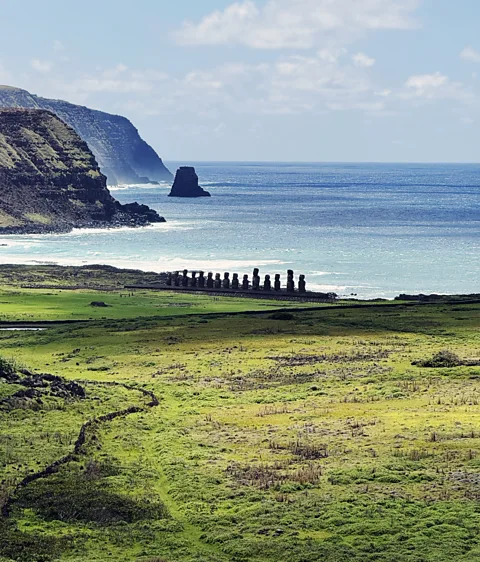
The moai were created by the first communities of Polynesian people living on the island to represent the likenesses of their ancestors and the family of chief Hotu Matu’a, who is thought to have first settled the island after canoeing to Rapa Nui from an island in East Polynesia. At some point in the late 18th and early 19th Century, the statues were all mysteriously toppled, likely because a new religious movement took hold on the island, or possibly because of some conflict – historians have yet to find definitive answers. Due to the formidable history etched in these huge stone statues, in 1995 the Rapa Nui National Park was listed as a Unesco World Heritage site.
Still, the moai aren’t perfect and pristine statues, shielded from their surroundings. In fact, they began deteriorating as soon as they were carved, according to the 1997 book Death of a Moai by historian Elena Charola. The tuff was stressed as it was chipped and pecked out of the quarry, chafed by ropes, then scratched and scraped on the long journey downhill, Charola writes.
From the day they were erected, the sun, wind, rain and vagaries of temperature have also taken their toll on the moai. When moisture from sea spray evaporates, salt crystallises inside the soft volcanic tuff expands, causing the statue to flake or spall, creating hairline cracks and honeycomb-shaped cavities. I notice lichens growing on the surface of many of the statues, with the appearance of concentric rashes.
Many believe the moai should, as they are, go into the ground and disappear. Let the moai go to their hanua, their land, and let them go back home – Dale Simpson Jr
Animals interfere with the moai, too. Horses and cattle scratch their itches on the monoliths while birds claw into the tuff and deposit toxic droppings, or guano, which erodes the material yet further. In 2020, a truck accidentally crashed into one of the faces.
Crucially, though, weathering of the moai appears to have increased sharply during recent decades, Daniela Meza Marchant, lead conservator for the Ma’u Henua Indigenous community that runs the Rapa Nui National Park, has said. She noted that images and records from the past century show alteration has increased over the past 50 years compared to the previous 50.
In fact, according to a 2016 Unesco report, the Rapa Nui’s moai are among the heritage sites most affected by climate change worldwide.
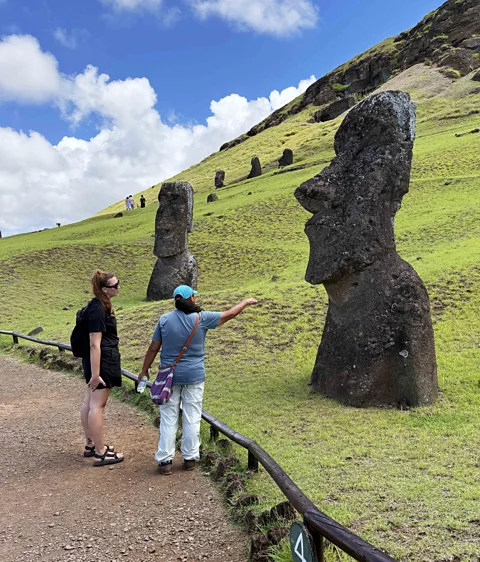
Over the last few decades, rainfall on Rapa Nui has decreased radically, becoming more sporadic but also more potent, pummelling the moai more aggressively than before. The island already has little tree coverage, but frequent droughts have dried up freshwater reserves and can boost the risk of wildfires. One wildfire in October 2022 charred and cracked some 80 moai in Rano Raraku, the volcanic crater that contains the famous quarry where many monoliths were carved. The resulting damage was “irreparable and with consequences beyond what you can see with your eyes”, local authorities said at the time.
Rising sea levels and increased extreme wave events are also eroding the island. This is one of the most imminent threats to the moai, the Unesco report states, as more than 90% of the standing monoliths are positioned along the coast.
People have tried to save the moai before. Over two decades starting in the 1970s, American archaeologist William Mulloy carried out several restoration efforts on the island, re-erecting statues and reassembling fragmented platforms which had been toppled en masse in the early 1800s. In the 1990s, a site called Tongariki that had been swept away by a tsunami during the 1960s had its moai erected again by local archaeologists.
Their preservation is not merely desirable, it is absolutely imperative – Claudio Cristino-Ferrando
More recently, in 2003 a Japanese-funded Unesco project waterproofed the Tongariki statues with a chemical agent designed to make the tuff more resistant to sea spray. However, the expensive and delicate treatment must be reapplied every five to 10 years, a burden on the few local resources available. Several other locations are pending this preventive intervention, according to local magazine moeVarua Rapa Nui.
Some conservation efforts, though, have gone wrong. In 1986, researchers from the Senckenberg Natural History Museum in Germany made silicone moulds of the statues in an effort to make replicas, but inadvertently peeled off a surface layer of tuff from the monoliths, eroding the statues even more. “The colour of the stone was completely altered,” notes one study about the incident.
Today, moai preservation is steadily improving, aided by new technology and occasional funds from international organisations.
To try to counter the impacts of sea level rise, in 2018, local archaeologists reinforced two seawall-like structures by a moai site called Runga Va’e to prevent waves encroaching onto the ahu platform. They also pieced back together parts of the platform, which had crumbled over time, and reinforced it. The team used drones to make 3D scans of the area, allowing them to plan restoration and conservation work without having to do large, invasive digging operations.
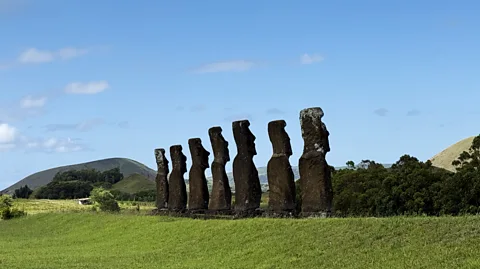
US-based non-profit CyArk has also helped the Rapanui people to create accurate 3D models of all the island’s ahu and moai using drones, cameras and laser scanners.
“You’re taking thousands of these overlapping photos and then creating a 3D model taking the points in common between different photos,” says Kacey Hadick, CyArk’s heritage programme manager who has worked on the island since 2017. “This can help monitor changes over time, rates of erosion, and gives a really good record of what the current state of things are.”
In 2023 Unesco’s undersecretary of cultural heritage Carolina Pérez Dattari allocated $97,000 (£72,000) for damage assessment, repair and future risk management plans for the moai scorched by wildfires in 2022.
After an initial analysis, in May 2025, the Ma’u Henua team began the physical conservation work for this project on five of the most fire-damaged moai, says Ariki Tepano Martin, the Ma’u Henua president.
Their lead conservator Meza Marchant assembled canopies to shield the moai from weather conditions and reduce their moisture levels. She is now treating the fire damage with a chemical solution concocted for the moai by stonework restorers from the University of Florence, who’ve been working with the Rapanui since 2009. The Italian experts have already tested the solution on small rock fragments from the charred moai in their laboratories: the liquid acts like a gentle but thorough wash that cleans off the black soot from the flames.
Meza Marchant will also use other similar chemical treatments developed by the Italians to strengthen the stone, rid it of lichens with an antibiotic-like treatment, and make it water-repellent, protecting it from sea spray and rain damage, similar to the glaze used on the Tongariki, says Tepano Martin. Constant monitoring is carried out to verify whether the treatment is producing the expected results, in the hopes of halting the ongoing deterioration of the moai.
High import taxes on these specialist chemicals from Italy, though, have made this operation harder than predicted, Tepano Martin says.
Eight years ago, Meza Marchant used some of these Italian techniques to restore the Ahu Huri a Urenga, a rare moai with four hands which is one of the few perched atop a platform on the interior part of the island. The statue, which stands along the winter solstice line and was used for astronomical observations, was re-erected by archaeologists in the 1970s after the 18th Century topplings, but became eroded over time.
Once the five moai have been conserved, the Ma’u Henua group aims to use them as a blueprint for all future monolith conservation and restoration projects on the island. Until now, “every hole, every bit of maintenance, required a special permit”, says Tepano Martin. “The project with these five moai will help us generate a moai conservation protocol so we no longer need to request permission moai by moai each time.” Still, they only have financing for these first five moai.
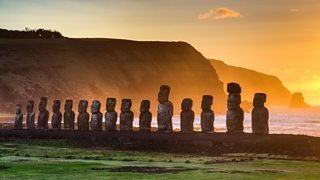
Cognisant of the environmental threats, Tuki and her husband, who also works in tourism, tell me some locals believe the moai would be better preserved in museums. A new museum is currently under construction on the island, and plans suggest it will likely host and protect some moai statues.
As we trek up the volcanic hill of a ceremonial village called Orongo, they show me some of the island’s most eroded and ruined artefacts: ceremonial hieroglyphs on large slabs of stone around the village. A special moai used to sit atop this hill: the Hoa Hakananai’a statue, which has unique hieroglyphs across its back. The statue was taken from Rapa Nui by British sailors in 1868 and is on display in the British Museum in London.
Considering the frailty of these hieroglyphs in particular, Tuki and her husband say some locals believe the statue is safer in London, guarded by security cameras, a glass encasement and humidity gauges. Arguably, the couple says, the Hoa Hakananai’a also serves as an ambassador for Rapanui culture to the hundreds of thousands of people who might be able to visit the museum, but not this remotest of islands. Many locals, on the other hand, are adamant that the statue should be repatriated.
The emissions from travel it took to report this story were 14kg CO2, as Sofia travelled to Rapa Nui for other reasons. The digital emissions from this story are an estimated 1.2g to 3.6g CO2 per page view. Find out more about how we calculated this figure here.
For others, though, destruction of the monoliths is simply part of the moai’s lifecycle.
“Many believe the moai should, as they are, go into the ground and disappear. Let the moai go to their hanua, their land, and let them go back home,” says Dale Simpson Jr, an archaeologist at University Illinois Urbana-Champaign in the US who studies Polynesian carving tools. He notes that many communities across the Pacific destroy artefacts and regalia purposefully. “Everything’s on a lifecycle, and it begins and it ends. We may see it as destruction, but it’s the life line of a statue.”
Some Rapa Nui locals fervently disagree, however. For them, the moai represent a cornerstone of cultural heritage and an irreplaceable masterpiece of scientific and historical human creativity. They also attract more than 100,000 visitors to Rapa Nui annually, where tourism has become the main driver of the economy.
“Their preservation is not merely desirable, it is absolutely imperative,” says archaeologist Claudio Cristino-Ferrando from the University of Chile, who is based in Rapa Nui. He thinks standing by and watching these monumental works deteriorate is “entirely untenable” and the idea of their “return to nothingness” misguided. “Such thinking contradicts not only our fundamental duty as custodians of human cultural heritage but also the original intent of Rapa Nui tradition itself,” he says – that the moai should serve as testaments of the Polynesian ancestors’ arrival on the island.
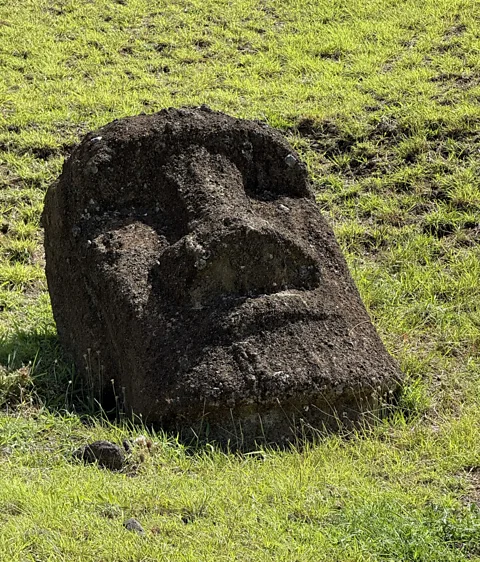
Amidst this debate, the Ma’u Henua group aims to take a multi-pronged approach to ensure the best chances of keeping moai statues on the island, combining conservation with support for the ongoing creation of new artefacts. Alongside the group’s conservation work, Tepano Martin hopes to develop programmes that incentivise local artisans to continue making moai and to pass on traditional tuff carving techniques to younger generations.
Some of the moai sculpted by Tuki’s father can already be found standing more than two metres (6.6ft) tall outside the island’s airport. They were also sent to represent the Rapanui people in Santiago and Valparaíso in mainland Chile, and to Spain and Japan.
“It’s not just about protecting the moai, we’re protecting the moai to ensure the preservation of our people on this island,” says Tepano Martin. “Our culture lives on. It is still alive, and we can preserve our ancestors’ tradition by creating something new.”
